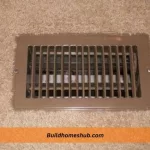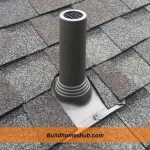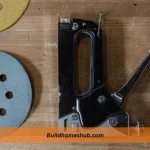Proper ventilation is essential for maintaining good indoor air quality and preventing the buildup of moisture, odors, and pollutants in a room. However, ventilating a room without windows can be a challenge. This article will explore several techniques o how to ventilate a room without windows, including passive and active methods.
One option is to install an air vent or duct in the ceiling or wall. This can be connected to an external ventilation system or an air conditioning unit, allowing fresh air to flow into the room. Another option is to use a portable air purifier or dehumidifier. These devices can help to remove pollutants and excess moisture from the air, improving the overall air quality in the room.
Another way to ventilate a room without windows is to use a fan. A floor or ceiling fan can help to circulate the air and improve ventilation in the space. This can be especially helpful if the room is small or if there are no other options for ventilation.
Alternatively, install a window in the door to allow for some natural ventilation. This will depend on the layout of the room and the availability of a suitable door.
How to Ventilate a Room Without Windows
Passive ventilation techniques
1. Vents and air bricks
Vents and air bricks are small openings in walls or floors that allow for the natural exchange of air between the inside and outside of a building. They can be placed at the highest and lowest points in a room to allow hot air to rise and replace cooler air from outside.
2. Chimney effect
The chimney effect refers to the natural movement of air through space due to temperature differences. You can encourage fresh air circulation by creating a “chimney” effect in a room without windows. This can be achieved by installing a vent at the top of the room and another at the bottom or by opening a door or window at the bottom and a vent at the top.
3. Ventilation tube or pipe
Another passive ventilation option is installing a ventilation tube or pipe that connects the room to the outside air. This can be as simple as a flexible duct placed in an opening in the wall or floor; or a more permanent pipe with a fan or blower to help move the air.
Active ventilation techniques:
1. Exhaust fan
An exhaust fan is a mechanical device that removes air from a room and vents it to the outside. Exhaust fans can be installed in the ceiling or wall and are often used in bathrooms and kitchens to remove moisture and odors.
2. Portable air conditioner with an exhaust hose
If you want to ventilate and cool a room without windows, you can use a portable air conditioner with an exhaust hose. The exhaust hose can be placed in an open window or through a hole in the wall to vent the hot air outside.
3. Heat recovery ventilator (HRV) or energy recovery ventilator (ERV):
HRVs and ERVs are more advanced ventilation systems that use a heat exchanger to transfer energy between the incoming and outgoing air streams. This allows them to recover heat or coolness that would otherwise be lost, making them more energy-efficient than other ventilation methods.
Tips for maximizing ventilation in a room without windows:
1. Use multiple ventilation techniques together
Combining multiple ventilation techniques can increase the amount of fresh air circulating in a room without windows. For example, you could use a combination of vents and an exhaust fan to create a more effective ventilation system.
2. Ensure proper ventilation equipment installation and maintenance
It’s important to follow the manufacturer’s instructions and hire a professional to ensure that your ventilation equipment is installed correctly. Regular maintenance, such as cleaning and replacing filters, can also help to keep it running effectively.
3. Keep doors and other openings clear for airflow
In addition to using ventilation equipment, you can improve the airflow in a room without windows by keeping doors and other openings clear. This can allow for air’s natural movement and help improve ventilation.
4. Use air-purifying plants
Air-purifying plants can help to remove toxins and pollutants from the air, improving the overall air quality in a room. Some good options for air-purifying plants include snake plants, spider plants, and peace lilies.
Final Thoughts
There are several options available for ventilating a room without windows. While some of these options may require professional installation, they can improve the air quality in a room without windows. It is important to ensure enough fresh air flowing into the room to keep the air quality healthy and to prevent the build-up of excess moisture or pollutants. Overall, it is essential to consider the specific needs and circumstances of the room to choose the best ventilation solution.
I hope to help you make the right choices with my content. I am passionate about building new homes and renovations. Follow me, on my socials, I drop nice stuff that may be helpful.











